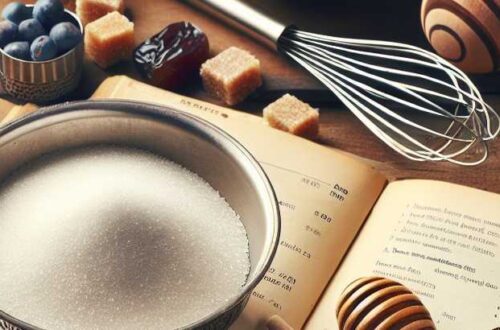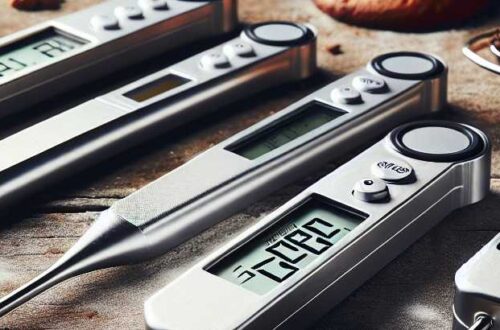Understanding Baking Temperatures

1. Factors influencing ideal baking temperatures
Title: Turning Up the Heat: Navigating the Quirky World of Ideal Baking Temperatures
Heads up, oven-enthusiasts! Today we’re diving, nay, somersaulting into the delectably exhilarating world of baking. Buckle up and grab your oven mitts, because we’re about to unravel the mystery behind the art of setting an ideal baking temperature. Is it an arcane secret handed down by our grandmas? Or a complex mathematical formula that Einstein scribbled on a cocktail napkin? Eh, not exactly. But it’s certainly more sassier and flavour-packed than that!
1. You Are What You Bake
The first factor? It’s the diva of the baking world – the recipe itself. A resplendent roast chicken won’t cook efficiently at the same temperature meant for a coy, subtle angel food cake. Forget about the unspoken rule ‘3-5-0, good-to-go’ – that works only in a world where every recipe is a vanilla cupcake lookalike. Which is no world we want to live in, right?
2. Size Matters
Well, well, well, there indeed is a ‘Goldilocks zone’ when it comes to baking too. Too small, and you might as well serve charcoal for dessert. Too large, and it’s a celebration for the ‘world’s raw dough festival’. Baking is like a dance between heat and size, and you have to find the rhythm that makes your baked dish tap its feet and say, Just right!
3. Dough’t Forget the Fat Content
Ever wondered why cookies bake at wildly different temperatures? It’s a sweet, syrupy saga of butter, oil, and shortening. Fat content impacts how quickly a dish heats up. Drop the fat, and you might have to crank up the heat, lest your food feel under-prepared for its grand, gastro-stage debut.
4.
“These vessels now make the return voyage from the Filipinas to Nueva España with great difficulty and danger, for the course is a long one and there are many storms and various temperatures”
~ Antonio de Morga , History of the Philippine Islands Vols 1 and 2
Moisture and Its Sneaky Ways
Water content plays a part too, often in cahoots with that slick character, steam. High moisture = lower baking temps to give water time to skedaddle. Items with less water can handle a higher heat setting. By knowing your H2O, you can dodge the soggy-pie-tragedy or the chalky-muffin-mystery.
5. The Kneady Affair with Altitude
Forgot about the altitude, did you? Spoiler: it didn’t forget about you. High elevation prowess can turn a potential blue-ribbon carrot cake into a tantrum-throwing tot. It’s just science being a spoilsport. Higher altitude, less atmospheric pressure, and voila, you are in a speedy cooking mess. But fret not, there’s always room for some adjustments.
6. Oven Temper(ament)
Let’s finally address the elephant in the room – the oven. It’s not just a heated box, but a crafty, temperamental artist. Oven types (conventional, convection), their age, hot spots, and calibration introduce a buffet of variables to the temperature equation.
In essence, the ideal baking temperature is not a one-size-fits-all cozy sweater. It’s more like a bespoke suit – sophisticated, customized, and oh-so-chic!
Things can heat up pretty quickly (and unpredictably) in the baking world, but that’s half the fun! It’s all about understanding, experimenting, and achieving that perfect brownish gold that makes the taste buds jitterbug!
Now, go forth and conquer the whimsical world of ideal baking temperatures. Remember, the magic is not in the oven, but the ones who dare to experiment with its fiery passions.
Learn More Here: 1. Factors Influencing Ideal Baking Temperatures

2. Impact of temperature on baking outcomes
Title: The Big-Bang Bake Theory: Balancing the Degrees of Deliciousness
Allow me to transport you to a universe where time, humidity, ingredients, and temperature all dance a harmonious ballet, resulting in delightful concoctions – the magical world of baking. But hang onto your oven mitts, for this mythical trip is about to become sizzling hot. Today, we’re tackling the hot topic of The impact of temperature on baking outcomes. Consider this your golden ticket to mastering the thermostat and conquering the elusive art of baking.
Just as Goldilocks found her perfect porridge, in baking, too, you need to find the just right degree. Too cold, and your dough turns into a stubborn yet adorable mule, refusing to rise. Too hot, and your cake will probably morph into an equivalent of the Leaning Tower of Pisa. So, how hot is hot enough? Let’s toss our chef hats into this warm conversation.
Imagine being in your comfy bed on a chilly winter morning. All wrapped up under a blanket, you refuse to face the world. Your dough behaves the same way. If it’s too cold, that precious dough simply won’t rise. The yeast, our tiny heroes responsible for making dough rise, are just like us: they love warmth and detest cold. Too cold a temperature, and they would rather hibernate than work. Keep it around 70-80°F (21-27°C), and watch these fellows spring to life, making your dough rise beautifully.
Don’t crank up that dial just yet! A pitfall awaits at the other extreme. Think of baking at high temperatures as the culinary version of a scary roller coaster ride. The outside of your dough can brown (or rather burn) quickly, and before you know it, you have a culinary catastrophe that resembles charcoal rather than a delicious baked delight. The inside remains a gloomy, doughy mess, sorely disappointed that it missed its chance to shine.
“There still lingered one little cloud-patch of superstition, arising mainly from the supposed fact that comets had really been followed by a marked rise in temperature”
~ Andrew Dickson White, History of the Warfare of Science with Theology in Christendom
Heartbreaking, I tell you! This happens because the heat was so excited to finish baking that it didn’t allow time for the middle to catch up.
To avoid such tragedies, control the temperature based on your baking goal. Want a fluffy wonderland of a bread? Keep the temperature around 375°F (191°C). Maybe dreamy golden pastries are what your sweet heart desires? A slightly higher temperature (around 390-425°F, or 199-220°C) would do the trick. Remember, each recipe is its own universe, and the right temperature can be the guiding star to deliciousness.
Here’s a hot tip: preheat! Just like a grand premier, your oven needs time to roll out the red carpet and set the perfect mood. Skipping this step will result in irregular baking, leaving your baked creations feeling as though they are hosting an unplanned surprise party. Be patient, bakers!
But darling bakers, also remember that even with the most accurate oven and meticulously regulated temperatures, baking still saunters in the realm of sweet mystery. At times, your batch of cookies may decide to play the diva and need a little extra time in the limelight. A cake might stage a dramatic scene, taking longer than the recipe’s suggested time. But don’t fret, dear heart! These are small improvisations in your big baking show. And the reward of these perfectly baked masterpieces is undoubtedly worth the test of time and temperature.
In our wonderful baking world, temperature is more than just a number on the dial: it’s a savoir-faire that separates the good from the divine. You are the conductor, directing this symphony of flour, butter, and eggs, and the oven’s temperature, your baton guiding the harmony of flavors. With every degree, you are not just baking, you’re creating warm, delicious art. So dive into this heated encounter with confidence, and remember, every great bake starts with turning up the heat!
Source: 2. Impact Of Temperature On Baking Outcomes

3. Managing oven temperatures for different bakes
Title: Tempering the Temperamental Oven: A Comical Guide to Managing Oven Temperatures for Different Bakes
Attention all amateur bakers, professional patissiers, and everyone else entangled in the tangible joy of cookie dough and the irresistible scent of fresh bread! This piece is for those who sometimes find themselves in a love-hate relationship with their oven. Are you tired of your chocolate chip cookies coming out more like scorched disks of sadness rather than pillowy bites of heaven? Have you lost sleep pondering why your favorite crescent-shaped croissants droop like a weepy willow rather than puff up with buttery might?
Well, dear friends, it’s time to unroll your oven mitts, and let’s delve into the fiery world of managing oven temperatures for different bakes!
1. The Fahrenheit Story: Know Your Oven Temp
Did your grandma tell you that an oven should always be just right? Like Goldilocks testing the three bears’ porridge, you should know when your oven is too hot, too cold, or just right! Each type of bake calls for a new beginning, a.k.a., a specific oven temperature. Demure cakes prefer a low to moderate heat of about 325-350°F (that’s 160-180°C for our Celsius-clinging counterparts), while their rowdy ‘cookie’ cousins enjoy a hotter hangout at around 375-400°F (190-200°C).
Now, for your steadfast bread loaves, they rise to the occasion at a comfortably warm 375-425°F (190-220°C). Metaphorically, think of it like this: if the oven is the stage, then temperature is your conductor!
2. Preheat, or Prepare to Meet Doom!
A friendly reminder to always preheat your oven. Flinging your heavenly dough into a lukewarm inferno, well, it’s like plunging into a pool before checking if there’s water! Most recipes call for precise preheating times, but if not, a general rule of thumb suggests preheating for about 15-20 minutes before you slide in your star performers. This ensures your cakes rise like eager students answering a question, your cookies spread like gossip in a high school, and breads bloom like blossoms in spring.
3.
“This plan was one in strict harmony with the trend of the times, and it had the undoubted advantage of promising to save large sums in managing expenses”
~ Gustavus Myers , roject Gutenberg’s Great Fortunes from Railroads
The Hotspots Hobnob: A ‘Turn’ for the Better
Embrace this gospel truth – all ovens have hotspots. Picture a jack-in-the-box in a playground; the oven, too, has unpredictable corners, notoriously overbaking or under-baking certain sections. To combat this, dress up as a ballet dancer in the middle of the bake and boldly pirouette your pan (very gracefully, mind you) 180 degrees. This guarantees an even suntan for your bake, ensuring it emerges from the oven with a Hollywood star’s radiant glow.
Now, dust your floured hands, clear up those crumbs, and remember, managing your oven’s temperatures is much like taming a dragon. There might be a couple of burns, some shrieks of frustration, and a fire extinguisher may be needed more than once. But in the end, you’ll emerge, crowned the master baker, surrounded by the delicious evidence of your triumph.
In all things, remember to keep calm and bake on. Happy baking!





